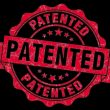Teschler on Topic
Leland Teschler • Executive Editor
On Twitter @ DW—LeeTeschler
A lot of engineers get annoyed when a supervisor wants to spend time reviewing some aspect of their job. If you find yourself thinking these meetings are usually a colossal waste of time, you may find solace from a recent report in the Harvard Business Review. There Professors Gary Hamel and Michele Zanini estimated that the cost of excess bureaucracy in the U.S. economy amounts to more than $3 trillion in lost economic output, or about 17% of gross domestic product.
They reached this conclusion after reviewing U.S. Bureau of Labor Statistics data which said there were 23.8 million managers, first-line supervisors, and administrators in the American workforce in 2014. That works out to one manager and administrator for every 4.7 employees. Overall, managers and administrators made up 17.6% of the U.S. workforce and accounted for nearly 30% of all salaries and benefits.
which said there were 23.8 million managers, first-line supervisors, and administrators in the American workforce in 2014. That works out to one manager and administrator for every 4.7 employees. Overall, managers and administrators made up 17.6% of the U.S. workforce and accounted for nearly 30% of all salaries and benefits.
These statistics made the Harvard professors wonder how much of this supervision we really need. They concluded that we ought to double the ratio of employees to managers and administrators so there is one manager for every 10 employees. This would free up 12.5 million individuals for doing real work instead of pestering their direct reports.
The shift in human resources would also make line-level employees more productive. The professors say it is reasonable to assume that as much as 50% of all internal compliance activity, such as budgeting and performance reviews, is of questionable value. Studies show that American workers who are not managerial spend about 16% of their time on these sorts of tasks. Cutting that time in half would annually save about 8.9 million worker-years.
The professors concluded these changes are feasible based on their analysis of a few plants where there is a minimum of supervisory personnel. These plants include those of Nucor (America’s most profitable steelmaker), W.L. Gore (famous for its Gore-Tex fabrics), Sun Hydraulics (a manufacturer of hydraulic components), and General Electric’s jet engine plant in Durham, N.C. At the GE Durham plant, for example, a single supervisor — the plant manager— oversees more than 300 technicians. The facility is more than twice as productive as other GE Aviation plants.
You might wonder whether the GE plant and the other establishments held up as role models are just anomalies. After all, there have been numerous studies claiming that better management — sometimes equated with more management — is the key to productivity. One in particular — done by economists from Stanford, MIT, the U.S. Census Bureau, and LSE, Centre for Economic Performance — looked at 30,000 manufacturing firms and claimed that those with more structured management practices were more productive, innovative, and had faster employment growth.
But a close reading of this study reveals that the “structured management” practices it mentions have nothing to do with supervisors. Most of the rise in structured management, say the authors, has come in data-driven performance monitoring. That’s a scenario where workers can see for themselves how they stack up just by checking statistics on a computer screen — no need for badgering from management.
In other words, less time spent dealing with administrators translated into more time being productive. That’s an enlightened way of running things that, unfortunately, too few facilities adhere to.
You may also like:
Filed Under: Commentaries • insights • Technical thinking









Tell Us What You Think!